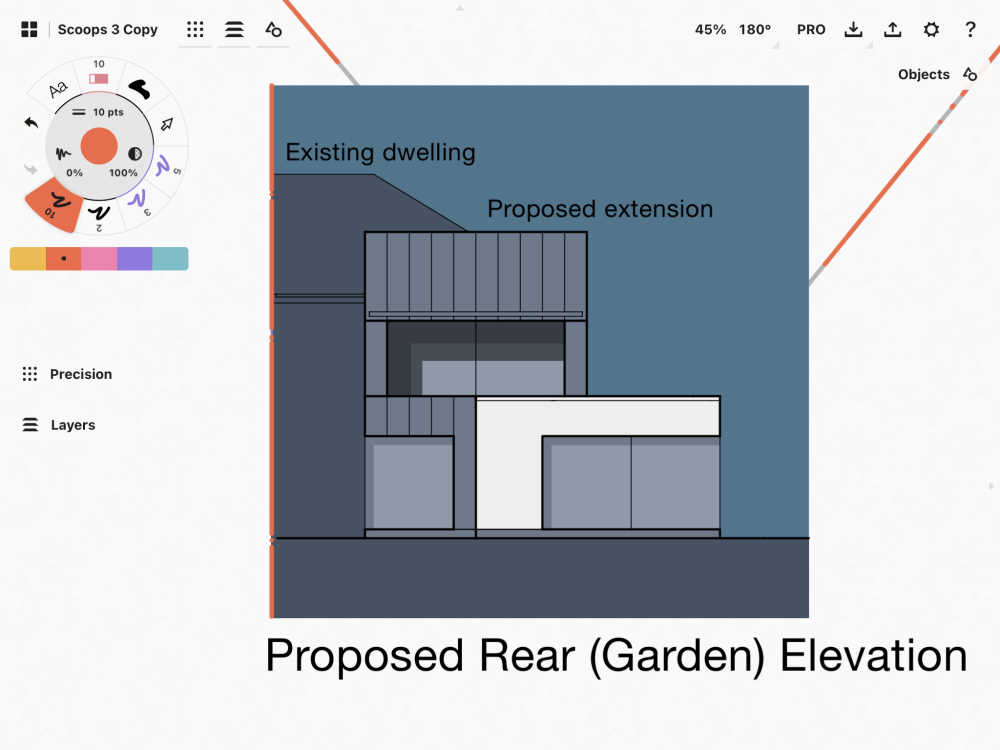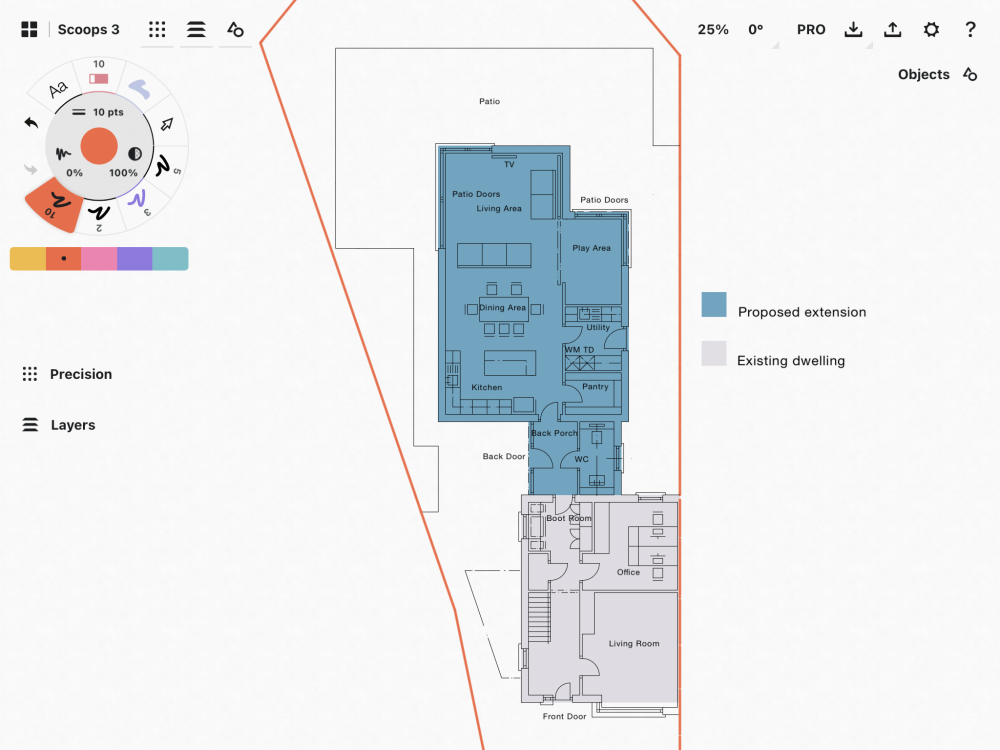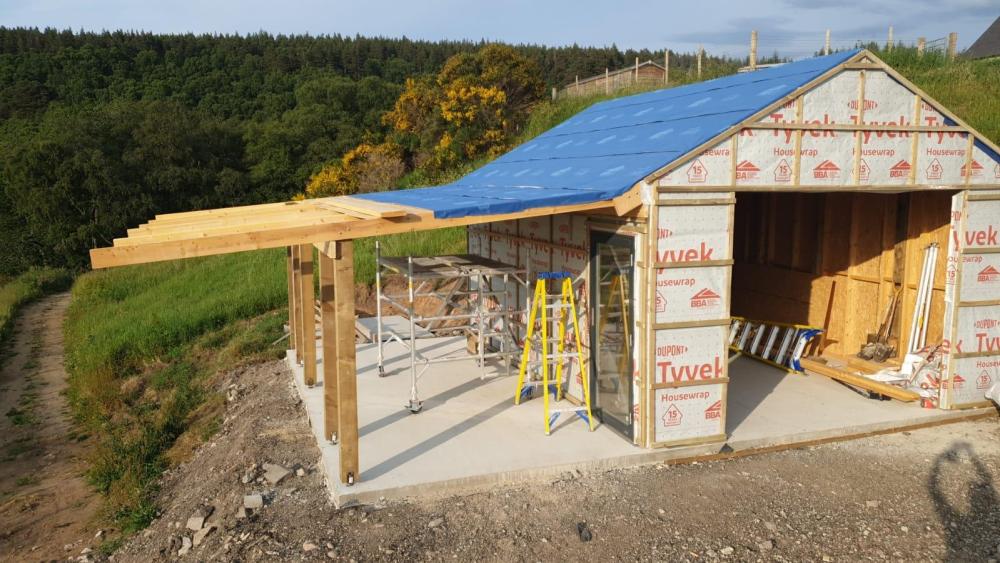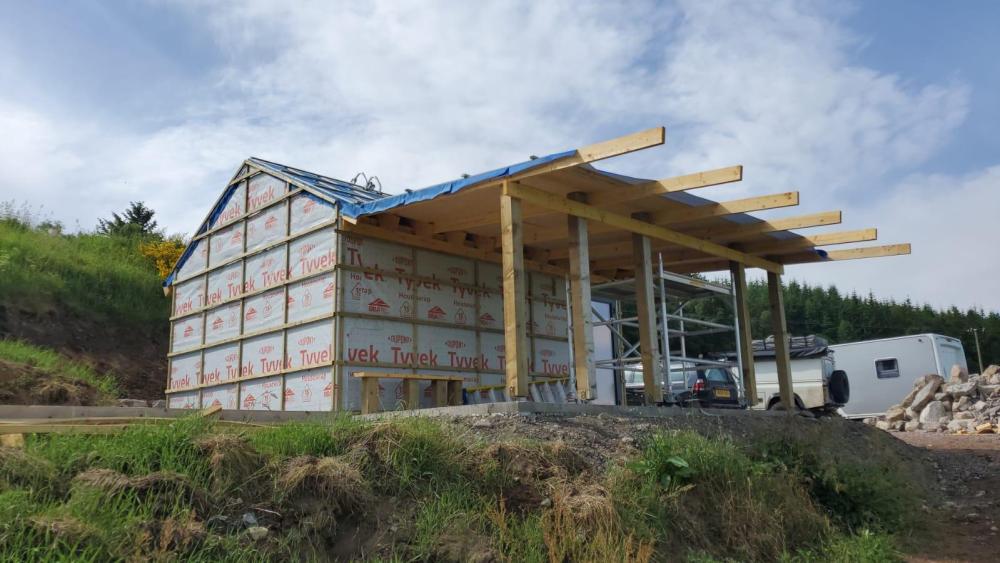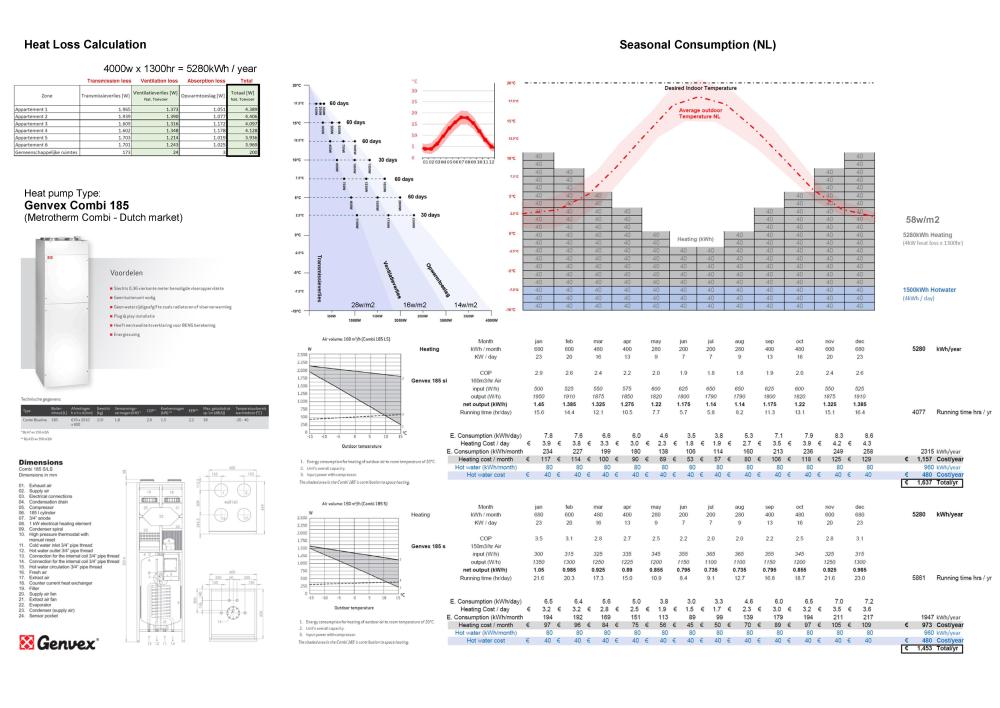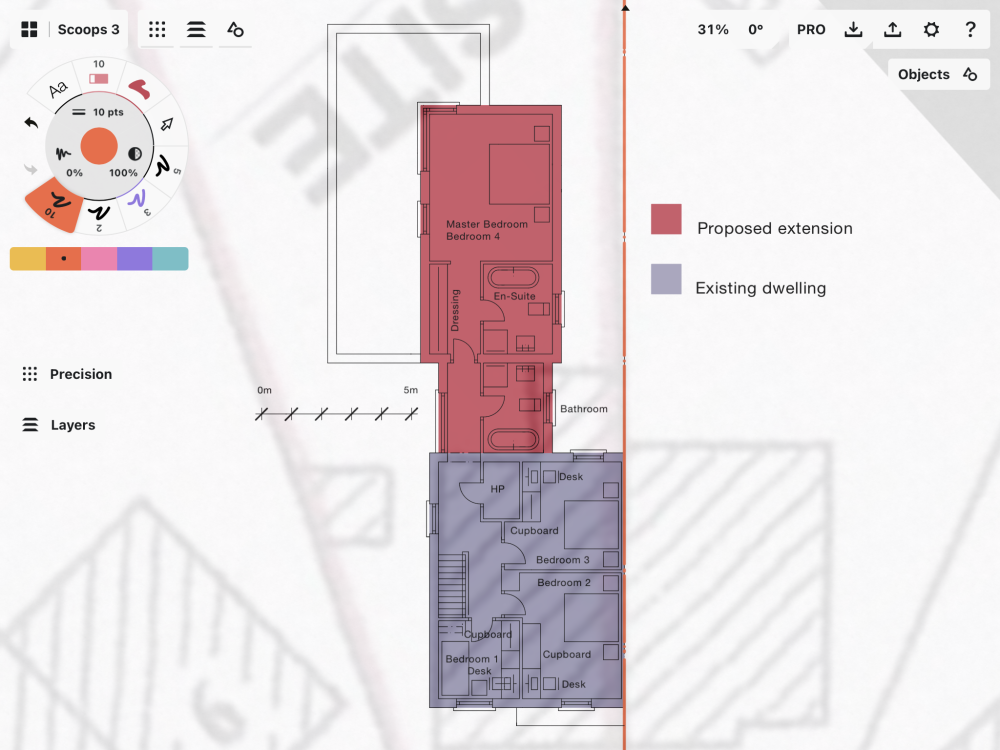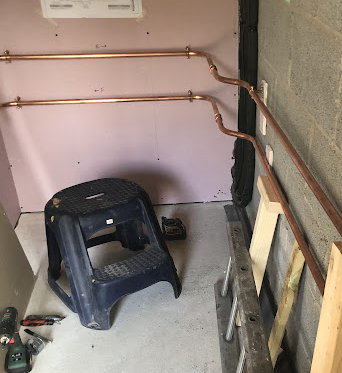Leaderboard
Popular Content
Showing content with the highest reputation on 07/20/23 in all areas
-
2 points
-
Here is the progress on the garage, now adding the lean-to. 2 weeks of long days x 3 diy ers. The materials cost above slab is about £5k incl the cladding yet to come The ped door was surplus due to an ordering error with the house. I think a kit would have cost a fair bit more, but be less sturdy. Your next question is about bco isn't it? BUT the garage is under 30m2 and he says the lean-to doesn't need regs. I don't understand that but it's what we wanted to hear.1 point
-
Willing to bet any tinkering to improve MCS (or replace it with something that works) would be interfered with by the boiler lobby. I spoke to our regular gas contractors, they aren't training any of their guys on heatpumps because they aren't getting any signals or encouragement to do so. A friend's son is an apprentice heating engineer with a small firm (a couple of guys). One is LPG and oil, another concentrates on gas. They were thinking of training the apprentice up on Hydrogen "because that's what's next". It isn't, it never will be. It's just a fig leaf to allow the boiler industry to keep selling. And it's working, the apprentice won't be trained on HPs, so the firm won't be able to (really) offer HPs so nobody will buy HPs because it's difficult to find a fitter.1 point
-
Regarding the discusion around ventilation heat pumps specifically the Genvex Combi 185. I was initially quite enthousiastic about the compact simple solution of a ventilation heat pump. After modelling the energy consumption it seems to be less efficient than I originally hoped (see attached summary) The house I am building is an apartment for two people with a floor area of 70m2 in the Netherlands (similar climate to England) Insulation is relatively high: Floors: Rc 4,8 m2K/W Walls: Rc 6,1 m2K/W Roof: Rc 8,2 m2K/W Windows: U-value <1.0 [W/m2K] After a heat loss calculation was made by a professional it was determined the annual heat consumption would be approximately 5280kWh/year Heat transmission loss: 28W/m2 Ventilation loss: 16W/m2 Absorption loss: 14W/m2 Essentially the conclusion was the ventilation heat pump would rely on the back up immersion heater which has a COP of 1 far too much in the cold months to heat the air and hotwater cylinder. This basically translates into an operational cost of about 2-3 times higher than a split air to air or air to water heat pump. If your electricity cost is reletively low then this is less of an issue, if it is high such as where I live (around 50 cents/kWh) then the operational cost is an important factor to consider. Attached is the annalysis that I made of the Genvex Combi 185 that perhaps someone considering a ventialtion heat pump might find useful. Similar values would also apply to the Nibe F470 or Nilan Compact S as they all similar in performance and function. Installation conclusion based on total investment and operating cost (assuming you have space for a split outdoor unit) : Economical option: heating and cooling with a 5kWh mini split (Mitsubishi) and using a 120L electric water boiler for domestic hot water combined with a shower drain heat exchanger powered with 4 x 400wp solar panels. Comfortable option: (about twice the cost) was to use a Air to water split heat pump and integrated 190L water boiler (such as the Vaillant aroTHERM + unitower heat pump) combined with low temperature floor heating, shower drain heat exchanger and 4 x 400wp solar panels.1 point
-
Update: So NHBC completed their inspection. No evidence of subsidence, cracking due to shrinkage/thermal movement. Repoint, reseal, keep an eye was the advice. Guy seemed to know his stuff, and was an ex subsidence assessor. Happy with that, good to know nothing sinister going on.1 point
-
A friend of mine had red tarmac with a brick frame around it for his drive, definitely prettier than the black stuff with no edge.1 point
-
It's a nightmare for us here. It's been a mix of gravel/bit of block paving from the beginning and even with membrane - the weeds, trees (we are surrounded by oak, sycamore and other trees) the wet (we are on a slight slope), it's awful. I just can't justify the cost though. We are getting some quotes for tarmac so we can compare. It's a large area - I'd guess close to 300m2.1 point
-
Gravel should be ok if the sub-base is compacted properly and is quite soft in appearance (to me) but I guess not, if you like the clean sterile look. I can think of better ways to spend £27k...1 point
-
1 point
-
Mortar will work OK. I struggle with the gun sometimes as they can block and make me rage. Other times they are fantastic. 5mm is very narrow so a trowel may work better.1 point
-
1 point
-
1 point
-
We had an awful time trying to get a meter fitted from anyone in Dec 21. They all said they were no longer installing meters. One of them whispered down the phone to try Octopus so I did. They prevaricated until I phoned to say that husband had just been diagnosed with bowel cancer and we were living, in December, in a caravan. They arrived the next working day with a single phase meter having been told that we were 3 phase. Took it away and came back the next day with the right one1 point
-
What is it with window companies?! Having read all the disaster stories on here we chose to go with a local joinery company for our hardwood windows. Visited them in their workshops and liked their passion and the quality of the work that we saw. They did not get one thing right Made some the wrong sizes even after making the formers in the right size! A run of hall windows has one with a different handed opening. The window beading on some is as rough as a bear's ar*e. The glazing has mastic residue all over it. No fire escape hinges in the bedrooms which they did rectify. Due to all sorts of personal issues during the build we had to let it go but did not pay, nor were we asked to pay, the final invoice. Do these issues rankle? Yes. Is health and well being too important to get embroiled in wrangles? Again yes, so we live with it and no one, except our, excellent, carpenters notice.1 point
-
my wife and I did our 3-phase cable. I pushed from one end while she was in the house pulling from the other. it was hard work as that stuff is bloody heavy!1 point
-
I'm sure its just me, but i was recently on a site with a £70k window install from a company named quite often on here. The windows were fitted and then a guy came a couple of days later with a van full of what looked like self adhesive draft excluder. He gave me a bit and i had a good squeze etc. Once it was fitted, which was basically done with a flat filling blade, i thought it looked shite. The windows were in a light green, the brickwork red. The 10mm + wide tape looked shocking. A week later it still hadn't expanded to meet the wobbly hand made bricks down either side of the windows. IMO how is that an effective air seal. I will be doing my usual. Sealing all around the front with a 10mm deep frame sealer. Covering that with a 3mm thick glued on plastic strip, matching the window. Filled from behind with foam. Foam cut back, and another bead of silicon around the inside. This is covered on the inside by the plasterboard, and skim. I know it's not the "right way", but works for me. I have got great airtest results with this method. Air sealing tape, and that expanding draft excluder cost 1/2 as much as the bloody windows. Chances are that cheap (not that anything is cheap these day) UPVC windows will leak anyway. This post is @pocster 's chance to call me a bodger. It will make a change from me having a go at him.1 point
-
Reckon I've got it! Again more by luck than judgement, but I did change the order of the bends pulled, pulled the bend by the wall first. It's all loose fittings at the minute as I'm trying to do all the prep work ready to be fixed and pressed once that cupboard is skimmed, painted and floor down and cylinder in.1 point
-
https://www.screwfix.com/p/ronseal-high-performance-wood-filler-natural-550g/51811 Two pack wood filler would be fine for the job, don't sand it just fill flush or wood glue and sawdust.1 point
-
Thanks. I had planned on two pocket doors in a tight wee space between utility and a (very small) downstairs shower room but think we'll just go with one and an archway and hide the electrics in the stud where we'd have had the second pocket.1 point
-
Thanks for all your help. I've thought against doing all the door openings like this now. I'll just do the 2 that are needed and the rest will be standard doors. Thanks.1 point
-
We have two floor to ceiling pocket doors that are pretty much permanently open, to my mind that is the best use of a pocket door i.e. where it's seldom used. If it's a door that will be opened and closed frequently then noise of the door opening/closing may be an issue. If the doors are painted (ours are) then repainting the doors, especially for the system we have (Portman pocket doors) will be pretty much impossible, I think with the Eclisse system the door can be removed from the pocket after installation so that problem would go away. As already highlighted but obviously depending on the pocket build up, services will be tricky on the pocket side of the door. If pocket doors are not essential for space saving I would recommend against them.1 point
-
Well it is good to see that you bothered to spend an hour this morning looking at data and finding out that happened. I would hate to think that you based your analysis on a politically right of centre viewpoint where no one else matters a toss and the 'sad cases' where not your family. Now you may not like being challenged, with data and facts, but without bothering to even take a cursory look at the underlying data, you are only expressing, as usual, an ignorant opinion.1 point
-
Fair enough… I’m a close my eyes and visualise it sort of person so I have no need for drawings and all that guff 🤣 my builder is a building notice kind of guy so we get on well.1 point
-
Derisk your build by using masonry or stick build timberframe. Theres been a a few to many stories of people's projects being sunk here recently by relying on ICF companies or TF manafactuers that went bust. Also ability to drive 5 mins to your hairy knuckled local builders merchant with a car trailer and return with a few 9X2's, 2 dozen breeze blocks, a bag of cement and a box of nails is invaluable in the real world of building a house and saves lots of time and cash.1 point
-
Bear in mind you won’t be able to get paid for your export if you go the DIY route. This isn’t a dealbreaker with most suppliers paying pittance but Octopus will pay 15p a unit flat rate on their Outgoing Fixed or 21.7p day rate/34.8p peak rate on their Flux tariff. Just something to consider in your calculations.1 point
-
Not sure they are correct in the UK, maybe a couple of days a year. There is an independent UK report (tried looking but can't find it) which explored every option over a whole year and little or difference between in and on roof. A roof without insulation behind it was no different, a roof with insulation behind the membrane made about 1-2% for a couple of hours for a couple of days. Basically sun had to be direct on the panel in the height of summer, as soon as the angle changed by a degree or so as the sun moved east to west, it was back to status quo between in and on roof. My roof has insulation behind the breather membrane and on sunny day I still get rated capacity.1 point
-
The public don’t care about that. Remember when Top Gear used to tell you how big the boot was. Now they blow up caravans.1 point
-
Hi @Sparrowhawk The below is my overview. Whilst I know you are going for a new boiler, the process below would still be the same. You will save a lot more over time fixing airtightness, the insulation and installing mechanical ventilation. Triple glazing is the most expensive element to install per m2 with the least energy saving(although important when everything else is high spec). Get yourself a heat loss calculator ( I use an excel spreadsheet for this ) and play with the elements and you can work out what gives you the best money spent/ money paid. Normal double glazing with a U-value of 1.2 versus your triple glazing say high spec 0.6 U-Value. Inside temp 20 centigrade, outside temp zero C will give a saving of about 10.6Watts per square meter. (ignoring any non air tight issues with the old double glazing window installation or the rest of the building) Aim to go APE It worth considering all the AIM and APE elements before making decisions. That is Airtightness, Insulation, Mechanical Ventilation with Heat Recovery OR Heat pump Ventilation, and Air Source Heat Pump, Photovoltaics and Electric Vehicle. Some of these will not work properly without the others, and some will complement others: A MVHR will not work properly without Airtightness. An Air Source Heat Pump will have to compensate for the lack of Airtightness and/or Insulation to the degree that the benefits become questionable, especially during winter, without them. An ASHP uses electricity and Photovoltaics can supply a little during winter and a lot during summer when cooling can be a problem and an ASHP can supply cooling. PV can supply a little to an Electric Vehicle during winter and plenty during summer if your vehicle is at home during sunny days. Extending a property and only doing AIM works to the extension will be no good, you have to do all the property within the thermal envelope. And thinking of running costs: a) Airtightness and Insulation should have no running costs and last (Well, loft insulation lasts over 40 years, in our experience) with the exception of UPVC units for windows and doors, but that being said it will last 30 years? b) Our MVHR unit servicing 100m2 floor sized home uses about 260kWh a year; far far less than would be used to heat incoming cold fresh air in winter, and we clean the filters twice a year. c) ASHPs are, in my opinion, still in their infancy but we are now in the second year of use here. We were very careful to follow best practice in the design and installation of our system, did a lot of bespoke tweaking, and we now have an upgraded 1970’s timber framed bungalow that uses less than 25kWh per year per m2 of floor for heating. d) PV would be a lot less attractive if there is no ASHP or EV (or battery backup) or diverter to the hot water immersion. In my humble opinion, if you have a suitable roof you should install as much a physically possible. Electricity production costs (cost per kWh) are difficult to evaluate because it depends how much is used and how much is supplied to the grid. We decided to go with the PV cost divided by 7 years, which for us works out at £1.60ish per day. Yesterday the PV produced 12kWh all of which we used. Remember, 5kW of PV panels will not produce 5kW because you would have to have: i. No shadowing of any of the panels during sunlight hours (like trees, buildings or chimneys. ii. All the solar panels face exactly the right angle in relation to the summer solstice midday sun for their position on the planet. (Perfect angle facing south and perfect slope) iii. solar panels completely clean iv. the sun is completely unobscured v. the Inverter is 100% efficient vi. all the other losses due to cables, and equipment, and so on. e) Knowing the above PV limitations professional installers often add extra panels to make up for these losses. (Our inverter allows us to add roughly 28% more panels than its kW rating) f) PV panel installations will produce about one fifth of the power in the winter compared with what is produced in the height of summer. g) The electric vehicle and charging from the PV only really works if you can have the vehicle plugged in during the day and supply over 3kW from your PV (or a large proportion of that). This is why we went for the biggest PV that would fit on the roof. We then installed a system which only charges the when the PV is on and generating over 2kW in winter and 3kW in summer. (we have a 13amp charging system). So, if finances cause you to have to consider only a few in my humble opinion AIM first and go APE later. (But prepare the property for the APE works as much as you can). Best of Luck Marvin1 point
-
If this is going to attract big bucks, why ask the question? Dig it out and get on with it !! Agree 100%. Also, you’ll need to provide an EPC when selling and if the floor insulation is dire that will still be reflected there and your marketing will suffer. UK public are far more aware of energy ratings and the longer cost subsequence of buying a pig smothered in lipstick, or as we call them “Persimmon Homes”. Do the job properly, as it sounds like you’re looking to get your money back anyways, just not as much out of the UFH job as you’d like. If it increases the kerb appeal, with no rads etc, which also lends itself to a much more flexible furniture plan, then dig it out, do it properly, and move onto the next job. Allow a week to excavate, barrow out, and prep properly for insulation and membranes. You’ll need 2 men on 2 powered barrows to keep up with removing the spoil created by one digger. Allow another week to install insulation, pipes, edge insulation and screed. Screed should be a one day event, so 4 days of prep / UFH. If you need a very good screeder that travels let me know.1 point
-
With even 300mm of EPS under the floor in a passive esque build I seem to recall you still lose like 8% of your heat down through the floor. I've dug out one room so far and built back up with 150mm pir + 25mm eps underneath. With hindsight I'd have dug deeper and put more insulation in.1 point
-
I dug out our full house (10m x 11m) approx 30 ton came out. It was my first "proper" DIY job so pretty taunting, but as has been said above, it's quite straight forward. The one "gotcha" that caught me out - I was using a laser level to chalk lines on the wall for where the MOT/Sand/Conc was to be filled to and ended up with low points in the middle of the rooms - if I was to do it again, I'd still use a laser level on my datum point, but grab a broom handle, mark the correct depth on it and use it to spot check various points around the rooms to make sure I'm at the correct level everywhere. I suspect you'd end up with a far better finish if you dig out.1 point
-
Without 100mm of insulation you are really loosing a lot of heat (cost) downwards.1 point
-
sounds worse than it is, a day with a micro digger with breaker and the old floor will be out. half a day to insulate and dpm then you ready for underfloor and screed.1 point
-
0 points
-
Having listened to the noise several times I am uncertain what the answer is. It gurgles in sequence to when the machine is draining / pumping. I know this doesn't help much.0 points
-
Most definitely not! It was bad enough doing a concrete base for the shed/chicken coop.0 points
-
Another one who hates windows, window companies and window fitters. Low point of our build due to multiple avoidable cock ups... Most we had to take on the chin.0 points
-
0 points


